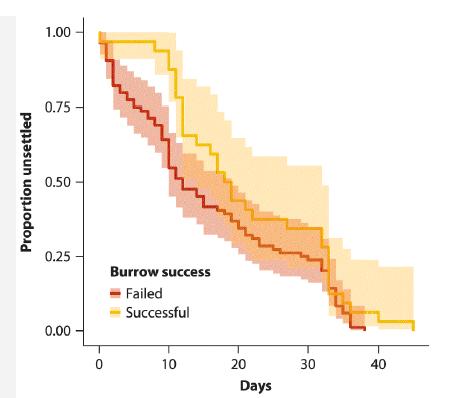Computer optional: Refer to the previous question. Download the isopod data set from the book website and
Question:
Computer optional: Refer to the previous question. Download the isopod data set from the book website and conduct the following analyses.
a. Calculate the hazard ratio of successful burrows relative to unsuccessful burrows in the isopods.
b. Interpret the hazard ratio in this context. What “hazard” is referred to?
c. Carry out a formal test of the null hypothesis of no difference in “survival” curves of successful and unsuccessful burrows.
Data from previous question
Each spring, 9-month-old desert isopods (Hemilepistus reaumuri) emerge from their natal burrows and walk many hundreds of meters before settling into a new burrow. Settling is mainly done by females, with males joining afterward to form a mated pair. Burrows occupied by a pair can either succeed in producing a family that survives until autumn or the burrow may fail to produce a family that survives to autumn. Baker and Rao (2004) used survival analysis to investigate correlates of burrow success. The following figure compares failed and successful burrows with the amount of time taken by the occupying isopods to settle after emerging (settling time).

Step by Step Answer:

The Analysis Of Biological Data
ISBN: 9781319226237
3rd Edition
Authors: Michael C. Whitlock, Dolph Schluter





